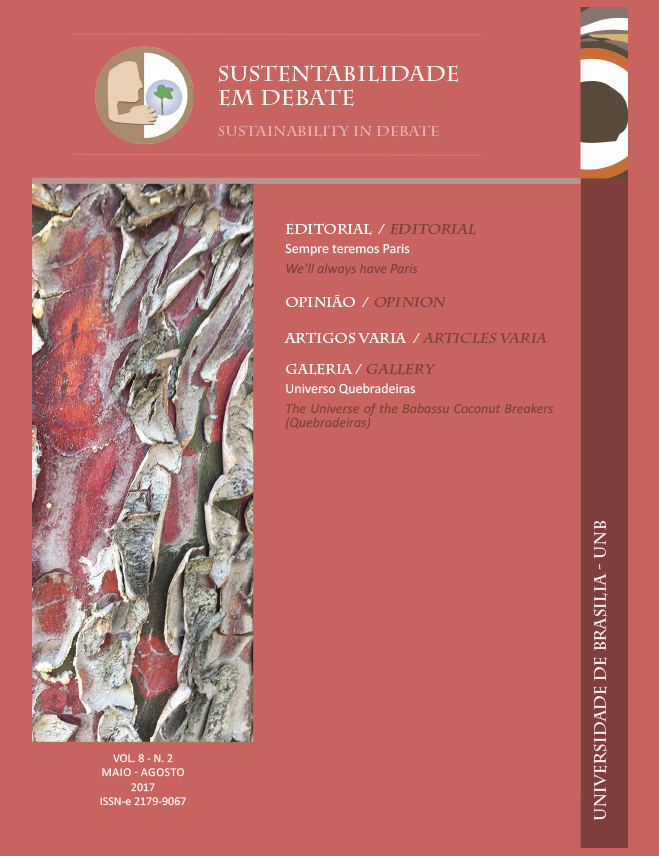The universe of babassu coconut breakers
DOI:
https://doi.org/10.18472/SustDeb.v8n2.2017.26924Abstract
Palm forests, or babaçuais, designate geographical areas with large incidence
of the babassu palm trees. This palm tree, from the botanical family Arecaceae,
is native to Brazil, and can be found in several Latin American countries. In
Brazil, babassu palm trees are present in 11 states (mainly in the states of
Maranhão, Piauí, Tocantins and Pará) thus covering a territory of 13 to 18
million hectares . An anthropic forest par excellence, babassu palm trees tend
to occupy areas which have been previously deforested by slash and burn
clearing. Proliferation of the babassu is fast, as it can become a closed forest
within a few years. Babassu extractivism is a traditional activity in Brazil due to
its widespread coverage and countless uses in rural life, as well as the strong
social and political mobilization in favor of free access to babassu forests.
Downloads
Downloads
Published
How to Cite
Issue
Section
License
SUSTAINABILITY IN DEBATE – Copyright Statement
The submission of original scientific work(s) by the authors, as the copyright holders of the text(s) sent to the journal, under the terms of Law 9.610/98, implies in the concession of copyrights of printed and/or digital publication to the Sustainability in Debate Journal of the article(s) approved for publication purposes, in a single issue of the journal. Furthermore, approved scientific work(s) will be released without any charge, or any kind of copyright reimbursement, through the journal’s website, for reading, printing and/or downloading of the text file, from the date of acceptance for publication purposes. Therefore, the authors, when submitting the article (s) to the journal, and gratuitous assignment of copyrights related to the submitted scientific work, are fully aware that they will not be remunerated for the publication of the article(s) in the journal.
The Sustainability in Debate Journal is licensed under Creative Commons License – Non-Commercial-No-Derivation Attribution (Derivative Work Ban) 3.0 Brazil, aiming at dissemination of scientific knowledge, as indicated on the journal's website, which allows the text to be shared, and be recognized in regards to its authorship and original publication in this journal.
Authors are allowed to sign additional contracts separately, for non-exclusive distribution of the works published in the Sustainability in Debate Journal (for example, in a book chapter), provided that it is expressed the texts were originally published in this journal. Authors are allowed and encouraged to publish and distribute their text online, following publication in Sustainability in Debate (e.g. in institutional repositories or their personal pages). The authors expressly agree to the terms of this Copyright Statement, which will be applied following the submission and publishing by this journal.





